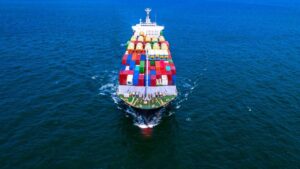By Hari Menon
The term ‘sale’ is generally described as the exchange of goods or services for financial consideration. It does not mention where a transaction should take place to qualify as a sale. Hence, it must be assumed that sale transactions or contracts can be made or drawn up from anywhere – land, sea, or air.

Without getting too much into the technicalities of the term, let us take a look at high sea sales.
High sea sale is common in international business. It is usually bulk commodities that are traded this way. A business organization may buy goods in large quantities from an international seller and sell them to buyers while it is in transit by sea to its destination port.
High sea sale is exempt from sales tax, if any, as the transaction is carried out while in international waters.
Typically, any resale carried out by the owner of cargo while it is en route to the port of discharge is termed as a high sea sale. Subsequent to signing a high sea sale agreement, depending on the location of the new owner, the cargo may have to be rerouted to its new destination.
It must be noted that as soon as a high sea sale agreement is reached, the carrier must be informed of details of the new importer.
We can understand high sea sales better with a simple example.
Company A in Bahrain purchases a container load of frozen meat from Company B in India. All financial transactions are settled between the two companies and the container is ready to sail. The transit time between Nhava Sheva port (JNPT) in India and Mina Salman in Bahrain is about 7-8 days.
During the sailing, company A finds a buyer in Bahrain, company C, for its container load of frozen meat. Once the conditions for payment are finalized between company A and company C, the original bill of lading and other shipping documents are endorsed by company A to the name of company C. The title and ownership to the goods, thus shift from company A to company C.
As we can see here, the transaction happens while the cargo is in the international waters, on its way from India to Bahrain. The exporter remains the same (company B), while the final importer has changed from company A to company C. Such a transaction is called a high sea sale.
Read Also; The Ultimate Guide to Ship Sizes
Here, by high sea, it is meant the international waters that are not covered by the jurisdiction of either country – India or Bahrain.
The ownership of goods can change any number of times while it is on high seas. However, a high sea sale agreement must list all the parties that were involved in the buy-sell transactions related to the particular consignment of goods, while at sea.
Normally, a high sea sale includes 3 parties – the seller, the original or intermediate buyer, and the new buyer. The above example is a clean transaction in which the financial transactions between the original seller and the original buyer are complete. Let us see how it is when the terms between the two are on credit or by bank guarantee.
Kindly like us on Facebook















